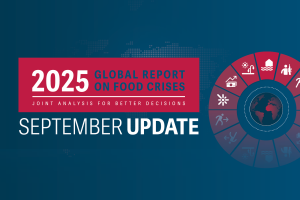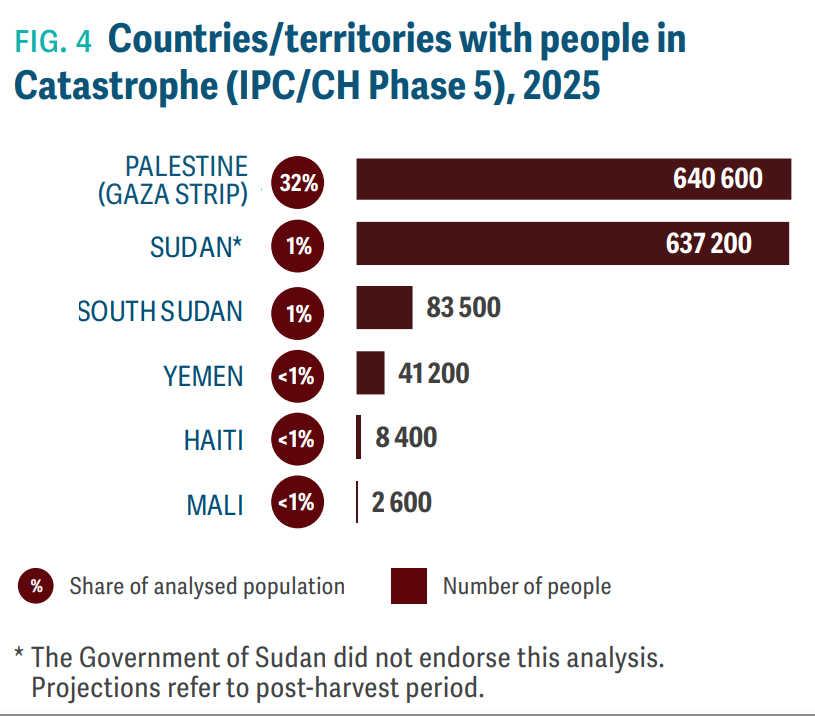Last update: September 2025
This section presents information-and decision-support tools to strengthen the ability of policymakers, food policy experts, and researchers to respond quickly to dynamic developments in the world food system.
Here you can find the latest information on current food crises through the Global Report on Food Crises, information from across Early Warning Systems, Vulnerability to Global Market Shocks V.2: Price Shocks to Major Staple Foods, and the Excessive Food Price Variability tool where you can track daily updates in food price volatility.
Global Report on Food Crises 2025 September Update

Click here to access the Global Report on Food Crises page in the Food Security Portal.
Key messages
The devastating impacts of man-made conflict have led to Famine (IPC Phase 5) in the Gaza Strip and the Sudan, and risk of Famine in parts of South Sudan. See page 2. In mid-August 2025, in the Gaza Strip, Famine was confirmed in Gaza governorate while conditions in North Gaza were likely similar or worse, but lack of data prevented classification. Famine is also projected by the end of September in Deir al-Balah and Khan Younis, projecting 3 of 5 governorates in Famine. Rafah was not analysed as it is largely depopulated (IPC Global Initiative, August 2025). In the Sudan, Famine was confirmed in five areas and projected to expand to five others in North Darfur from December 2024 to May 2025. Another 17 were at risk of Famine (IPC Famine Review Committee (FRC), December 2024).2 Available evidence indicates that Famine conditions likely continue, with deterioration during the June to September lean season (IPC Alert, July 2025). There was a risk of Famine in Ulang and Nasir counties of South Sudan from April to July 2025 (IPC, June 2025)
To download the report:
FSIN and Global Network Against Food Crises. 2025. Global Report on Food Crises 2025. Rome.
Excessive Food Price Volatility Early Warning System
The system monitors excessive volatility in food and fertilizer prices, identifying abnormal fluctuations to provide early warnings that support timely food-security responses.
Early Warning Hub
The Early Warning Hub consolidates alerts and data from multiple systems, providing timely information to help decision makers anticipate and address food crises.
